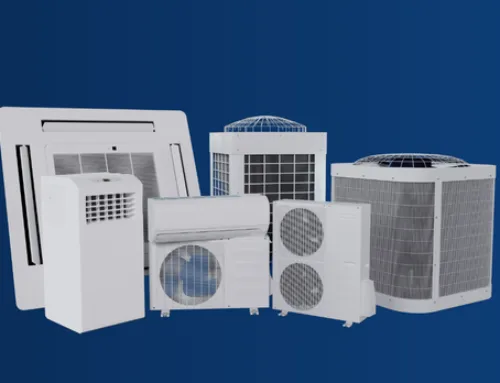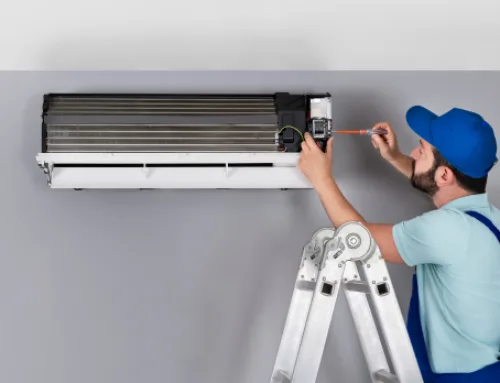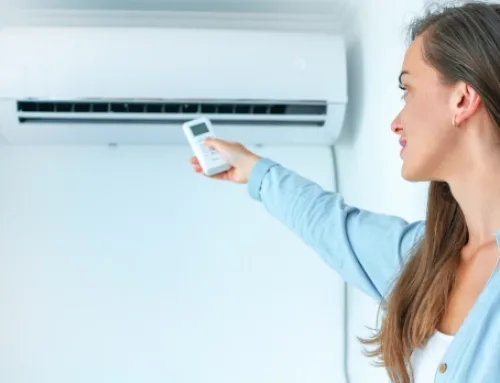The duration of a furnace is a significant consideration for homeowners in Canada. An in-depth knowledge of factors affecting the lifespan can help make intelligent choices about maintenance, repairs, and replacements.
“How long will a furnace last”? is the most common question every homeowner has, but don’t worry, we’ve got answers to your burning questions.
This detailed blog will explain critical factors that impact a furnace’s longevity, providing valuable tips and insights for maximizing its average life span.
By going through these factors, homeowners in Canada can take aggressive steps to boost their lifespan and optimize their performance and overall capacity.
What is the Ideal Lifespan of a Furnace?
On average, furnaces in Canada usually last between 15 and 25 years, depending on several variables, including the type of furnace, upkeep, and weather.
- Because they are more straightforward to build and have fewer moving parts than electric or oil furnaces, gas furnaces often last longer.
- A furnace’s lifespan can also be increased with routine maintenance, which includes changing air filters, checking for problems, and arranging professional tune-ups.
- On the other hand, furnaces may experience wear and tear from the severe Canadian winters, which could reduce their lifespan.
- Thus, homeowners must take proactive maintenance measures to guarantee the best possible performance and longevity from their furnaces.
Homeowners must know how long furnaces typically last in Canada to schedule replacements appropriately. Furnaces nearing the end of their life may become less effective and more likely to malfunction, resulting in higher energy costs and discomfort during the winter.
What are the Factors That Affect Furnace Lifespan?
How long the furnace can last is dependent on uncontrollable environmental factors as we as other key factors such as furnace type, furnace size, and its installation process. So let’s throw some light on these factors to examine how long furnaces last on average.
Type of a Furnace
A furnace’s longevity can be significantly impacted by the type you select. Because gas furnaces are more straightforward to build and have fewer moving parts than electric ones, they often last longer. On the other hand, because burning oil causes wear and tear, oil furnaces may only last for a while.
Size of a Furnace
How long most furnaces last is also based on the size of the furnace you select for your house.
A giant furnace will have more frequent on-and-off cycles, which will cause the parts to deteriorate more quickly.
On the other hand, a too-small furnace would have to work more to heat your house, which could result in early wear and malfunctions.
Furnace Installation Process
To extend the life of your furnace, a professional technician must install it correctly. Improper airflow, insufficient ductwork, or inappropriate sizing are just a few of the problems that could arise from a poorly built furnace and lead to premature wear and decreased performance.
Furnace Maintenance Routine
Maintaining your furnace regularly will help it run as well as possible for as long as possible. This involves routine maintenance on the furnace and ducts, changing the air filters, lubricating the moving parts, and looking for any indications of wear or damage.
Regular maintenance should be addressed as this can help you save your furnace from more frequent breakdowns and decreased efficiency.
Furnace Model
The lifespan of the furnace model might also be affected by its build quality and design. Furnaces of superior quality, constructed with robust materials and parts, should endure longer than those of lesser quality.
Furthermore, some characteristics can help with longevity and efficiency, such as modern heat exchangers and variable-speed motors.
Which Type of Furnaces Lasts Longer?
Understanding the various types of furnaces is crucial when evaluating how long high-efficiency furnaces last in Canada.
Gas Furnaces
- Have a longer lifespan than other kinds.
- Have fewer moving parts and simpler designs.
- With time, they endure less deterioration.
Electric Furnaces
- Last less time than gas furnaces on average.
- Have more intricate parts, such as sequencers and heating elements.
- It may need more frequent replacements and repairs.
Oil Furnaces
- Depending on maintenance, these appliances may have different lifespans.
- Due to oil combustion, they need to be cleaned and maintained regularly.
- Pumps and burners may wear out more quickly than other parts.
In short, gas furnaces have fewer moving parts and a more straightforward design; they usually have the longest lifespans.
You can explore more about the types of furnaces in our recent article.
6 Warning Signs That Indicate You Need To Replace Your Furnace
There are some warning indications that your furnace may need to be replaced. To assist you decide when it’s time to think about getting a new furnace, let’s take a closer look at these signs.
Increased Energy Bills
A sudden jump in your energy costs may indicate that your furnace isn’t working as well as it should. Older furnaces frequently lose efficiency because parts like the heat exchanger and blower motor wear and tear over time. Over time, upgrading to a newer, more energy-efficient furnace model can help reduce your utility costs.
Irritating Sounds from the Furnace
Strange noises from your furnace, such as screeching, rattling, or pounding, could signal technical problems. Ignoring these noises over time may result in more severe issues and dangerous situations. These noise problems may be resolved, and a new furnace will keep your house peaceful and pleasant.
Indications of Rust or Over-Soot
Excessive soot accumulation or rust on the exterior or inside of your furnace may indicate incomplete combustion or corrosion. Rust is a sign of moisture, which can cause component failure or structural damage. In these situations, a new furnace is required to guarantee dependable and safe heating.
Expensive and Repeated Furnace Repair
Purchasing a new furnace can be a more cost-effective option if you need furnace repairs regularly, particularly if the repairs are getting more expensive. Due to their age and potential need for no longer easily obtained parts, older furnaces are more likely to break down and require more costly repairs.
By replacing the furnace, you can ensure dependable heating for your house and save yourself the trouble and cost of frequent repairs.
Uneven Temperature Balance
If certain rooms in your house are always warmer or colder than others, there may be a problem with the distribution system in your furnace. This could be brought on by blocked air ducts, a broken blower motor, or an inadequately sized furnace for your house.
Blowing Cold Air
A broken thermostat, clogged airflow, or a defective heating element could cause your furnace’s chilly air output rather than warm air output. This might make your house feel cold and uneasy, particularly in the winter. It might be essential to replace the furnace to get proper heating functionality again.
Keeping an eye out for these warning signs and addressing them promptly can help you determine if it’s time to replace your furnace for better efficiency, comfort, and safety in your home.
Also, check out the signs that indicate your furnace needs repair.
How to Extend the Lifespan of a Furnace?
Increasing the longevity of your furnace in Canada is necessary for maintaining a comfortable and warm environment. By executing simple yet effective practices, you can boost the lifespan of your furnace while avoiding additional maintenance expenses.
Here, we have listed some strategies that can help you run your furnace smoothly for many years.
Regular Maintenance
Schedule annual maintenance by a skilled technician to ensure all things are working better and rectify issues before they occur.
Replace Air Filters
Do replacement of filters every 3-4 months to prevent dust as it can increase the efficiency and safety.
Proper Installation
Make sure that your furnace is installed correctly by a skilled technician to overcome performance-related issues.
Take Care of Repairs Quickly
Take care of any repairs as soon as possible to keep things running well and to stop small problems from growing into bigger, more expensive ones.
Keep Eyes on Thermostat Settings
To avoid putting undue stress on the furnace, pay attention to the thermostat’s settings. If you want to improve energy efficiency, you might choose to upgrade to a programmable thermostat. Understand the ideal thermostat settings to efficiently use it for your home heating.
Taking these precautions may help your furnace last longer and provide dependable, adequate warmth for many years.
Final Words
You can ensure that your furnace keeps performing at its peak for many years by putting these easy yet effective measures into practice. Make sure that having a well-maintained furnace reduces your energy costs and offers comfort and assurance during the coldest months.
If you still need help, you can contact Infiniti Home Comfort. We offer professional furnace installation and repair services in the Ontario region. With over a decade of experience, we are a Carrier factory-authorized dealer and can help you understand the furnace lifespan and install the new furnace.




